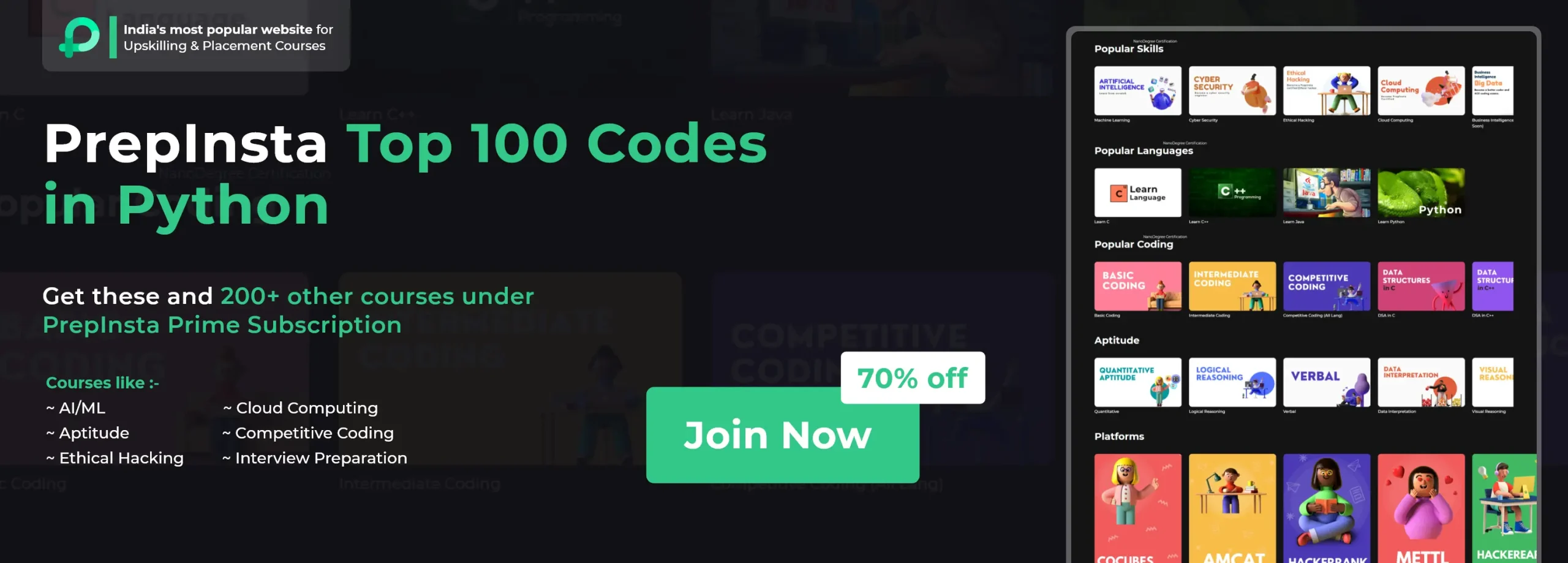0
Notifications Mark All Read
No New notification
- Login
- Get Prime
Python Virtual Machine
Python Virtual Machine
There is a program which provide us a programming environment known as Python Virtual Machine. The Python Virtual Machine (PVM) has the responsibility of converting the byte code commands into machine code so that the computer may carry out those machine code commands and show the result. PVM is outfitted with an interpreter to perform this conversion.

Python Virtual Machine
We are aware that only machine code, which consists of 1s and 0s, is understood by computers. PVM’s function is to translate the instructions from byte code to machine code, which the computer may then execute and show the results of. The byte code is translated into machine code by the interpreter, which then transmits the machine code to the computer processor for execution.
Python Virtual Machine Architecture
Now that we have a basic understanding of the PVM’s role, let’s delve deeper into its architecture. The PVM can be divided into several key components:
1. Bytecode Compiler
Before execution, your Python code is compiled into bytecode. This bytecode is platform-independent and can be executed by the PVM. The bytecode compiler is responsible for this crucial step.
2. Interpreter
The heart of the PVM is its interpreter. It’s the component that reads and executes the bytecode. The interpreter ensures that your Python code runs smoothly, regardless of the underlying system.
3. Standard Library
Python comes with an extensive standard library that provides pre-written modules and functions for various tasks. The PVM interacts with these libraries, making it easy to perform complex operations without reinventing the wheel.
Advantages of Python Virtual Machine
Now that we have a grasp of the PVM’s architecture, let’s explore why it’s a game-changer for Python developers.
1. Cross-Platform Compatibility
One of the most significant advantages of the PVM is its ability to run Python code on different platforms without modification. Whether you’re using Windows, macOS, or Linux, your Python code will work seamlessly.
2. Language Integration
The PVM can also integrate with other programming languages, such as C and C++. This feature allows developers to leverage existing libraries and tools, enhancing Python’s capabilities.
3. Portability
Python code that runs on one PVM will typically run on any other PVM. This portability simplifies software distribution and deployment.
Prime Course Trailer
Related Banners
Get PrepInsta Prime & get Access to all 200+ courses offered by PrepInsta in One Subscription
Get over 200+ course One Subscription
Courses like AI/ML, Cloud Computing, Ethical Hacking, C, C++, Java, Python, DSA (All Languages), Competitive Coding (All Languages), TCS, Infosys, Wipro, Amazon, DBMS, SQL and others

 0
0
Login/Signup to comment